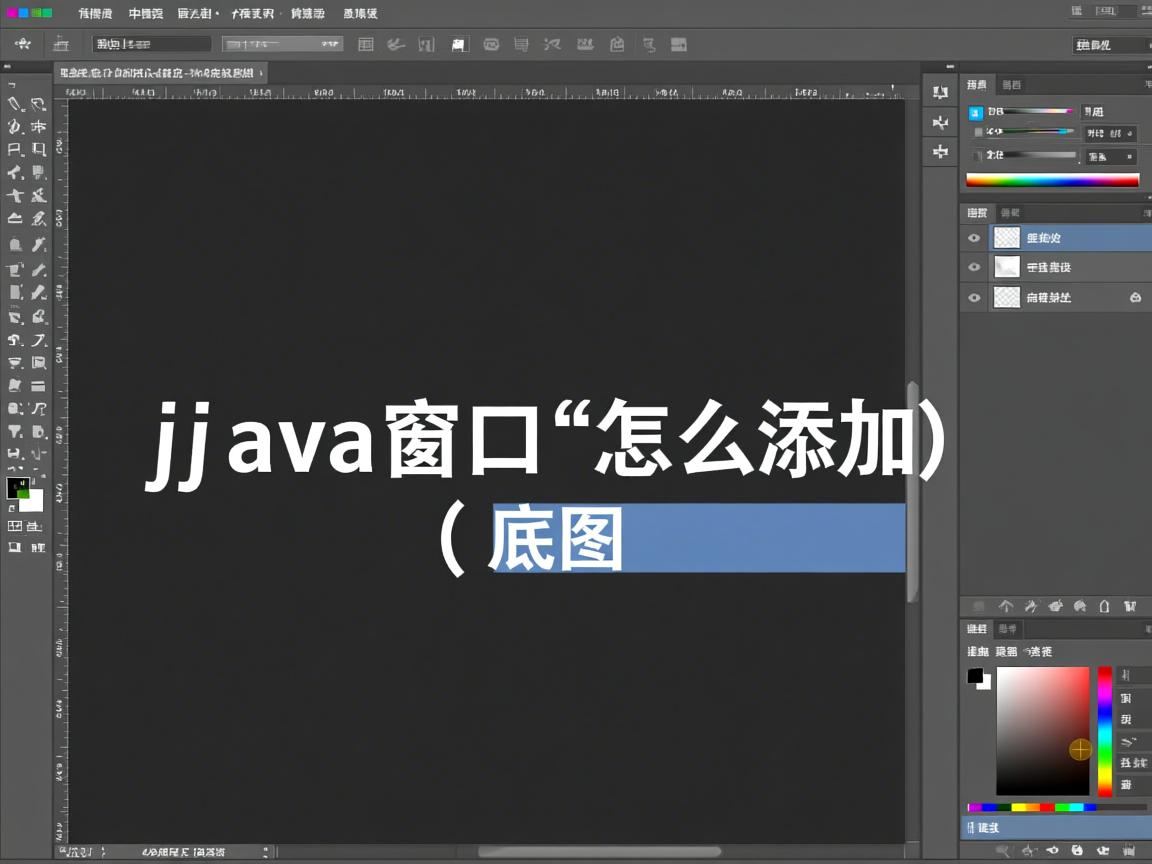上一篇
jjava窗口中怎么添加底图
- 后端开发
- 2025-07-14
- 4228
Java窗口中添加底图,可创建JFrame窗口,再创建带背景图的JPanel面板(重写paintComponent方法绘制图片),将面板添加到窗口并设置窗口可见
Java窗口中添加底图,可以通过多种方式实现,以下是几种常见的方法及其详细步骤:

使用JPanel和ImageIcon
- 创建JFrame窗口:创建一个
JFrame对象作为主窗口。 - 创建JPanel并设置背景图像:创建一个继承自
JPanel的类,并在其构造函数中加载图像,重写paintComponent方法,在该方法中绘制背景图像。 - 将JPanel添加到JFrame:将自定义的
JPanel添加到JFrame面板中。
import javax.swing.;
import java.awt.;
public class BackgroundPanel extends JPanel {
private Image image;
public BackgroundPanel(String path) {
image = new ImageIcon(path).getImage();
}
@Override
protected void paintComponent(Graphics g) {
super.paintComponent(g);
g.drawImage(image, 0, 0, this.getWidth(), this.getHeight(), this);
}
public static void main(String[] args) {
JFrame frame = new JFrame("背景图片示例");
frame.setDefaultCloseOperation(JFrame.EXIT_ON_CLOSE);
frame.setSize(500, 400);
BackgroundPanel panel = new BackgroundPanel("path/to/your/image.jpg");
frame.setContentPane(panel);
frame.setVisible(true);
}
}
使用JLabel和ImageIcon
- 创建JFrame窗口:同样,首先创建一个
JFrame对象作为主窗口。 - 创建JLabel并设置图像:使用
ImageIcon类加载图像,并将其设置为JLabel的图标。 - 设置布局管理器为null:为了能够自由控制组件的位置和大小,需要将
JFrame的布局管理器设置为null。 - 设置JLabel的位置和大小:使用
setBounds方法设置JLabel的位置和大小,使其填满整个窗口。 - 将JLabel添加到JFrame:将
JLabel添加到JFrame中。
import javax.swing.;
import java.awt.;
public class BackgroundLabelExample {
public static void main(String[] args) {
JFrame frame = new JFrame("背景图片示例");
frame.setDefaultCloseOperation(JFrame.EXIT_ON_CLOSE);
frame.setSize(500, 400);
frame.setLayout(null); // 设置为绝对布局
ImageIcon icon = new ImageIcon("path/to/your/image.jpg");
JLabel label = new JLabel(icon);
label.setBounds(0, 0, icon.getIconWidth(), icon.getIconHeight());
frame.add(label);
frame.setVisible(true);
}
}
使用LayeredPane
- 创建JFrame窗口:创建一个
JFrame对象作为主窗口。 - 获取LayeredPane并添加背景图像:通过
getLayeredPane方法获取JLayeredPane对象,然后创建一个JLabel来显示背景图像,并将其添加到JLayeredPane中。 - 设置ContentPane透明:为了使背景图像可见,需要将内容面板(
ContentPane)设置为透明。 - 添加其他组件:可以在内容面板上添加其他Swing组件,这些组件将显示在背景图像之上。
import javax.swing.;
import java.awt.;
public class LayeredPaneExample {
public static void main(String[] args) {
JFrame frame = new JFrame("背景图片示例");
frame.setDefaultCloseOperation(JFrame.EXIT_ON_CLOSE);
frame.setSize(500, 400);
frame.setLocationRelativeTo(null);
// 获取LayeredPane并添加背景图像
JLayeredPane layeredPane = frame.getLayeredPane();
ImageIcon icon = new ImageIcon("path/to/your/image.jpg");
JLabel backgroundLabel = new JLabel(icon);
backgroundLabel.setBounds(0, 0, icon.getIconWidth(), icon.getIconHeight());
layeredPane.add(backgroundLabel, Integer.MIN_VALUE);
// 设置ContentPane透明
JPanel contentPane = (JPanel) frame.getContentPane();
contentPane.setOpaque(false);
contentPane.setLayout(new BorderLayout());
// 添加其他组件
JButton button = new JButton("测试按钮");
contentPane.add(button, BorderLayout.SOUTH);
frame.setVisible(true);
}
}
FAQs
Q1: 如何确保背景图像适应窗口大小的变化?
A1: 在自定义的paintComponent方法中,使用g.drawImage(image, 0, 0, this.getWidth(), this.getHeight(), this);来绘制图像,这样可以确保图像随着窗口的大小变化而自动调整大小。

Q2: 如果我想在背景图像上添加多个组件,应该如何操作?
A2: 你可以使用JPanel作为容器,将背景图像绘制在JPanel上,然后在JPanel上添加其他Swing组件,这样,所有的组件都会显示在背景


